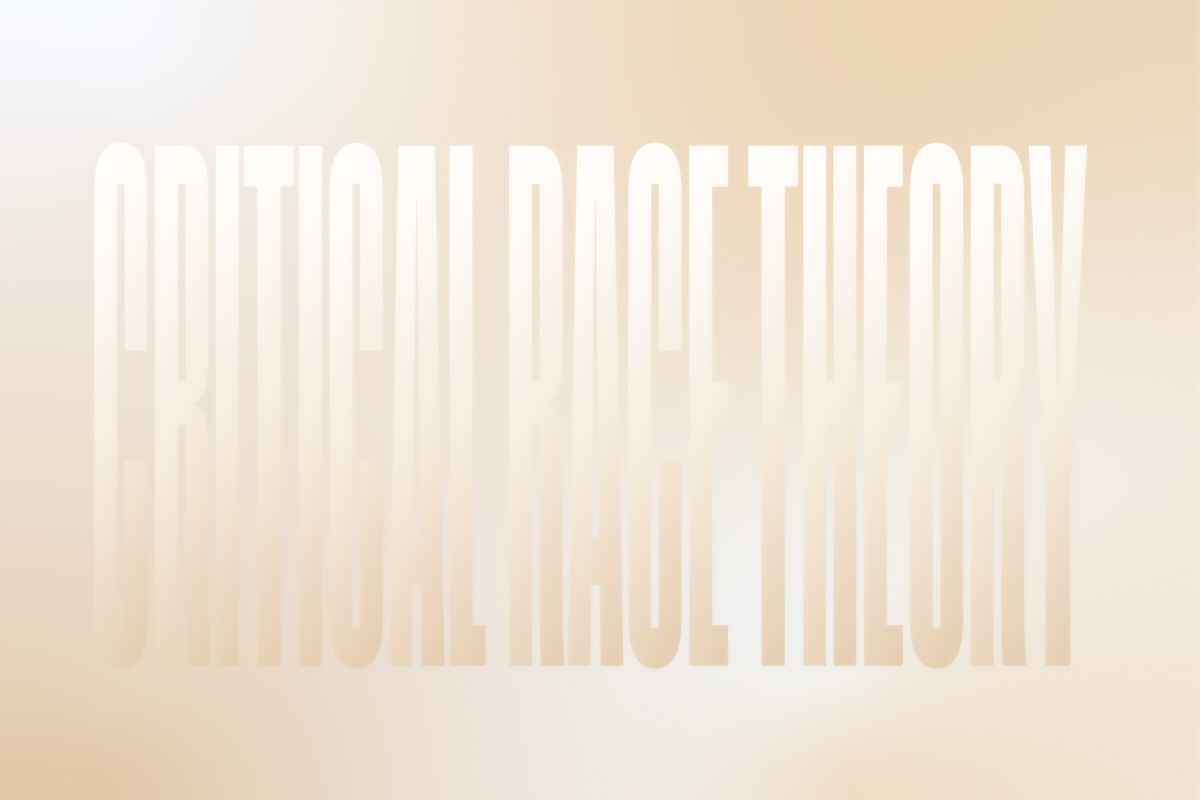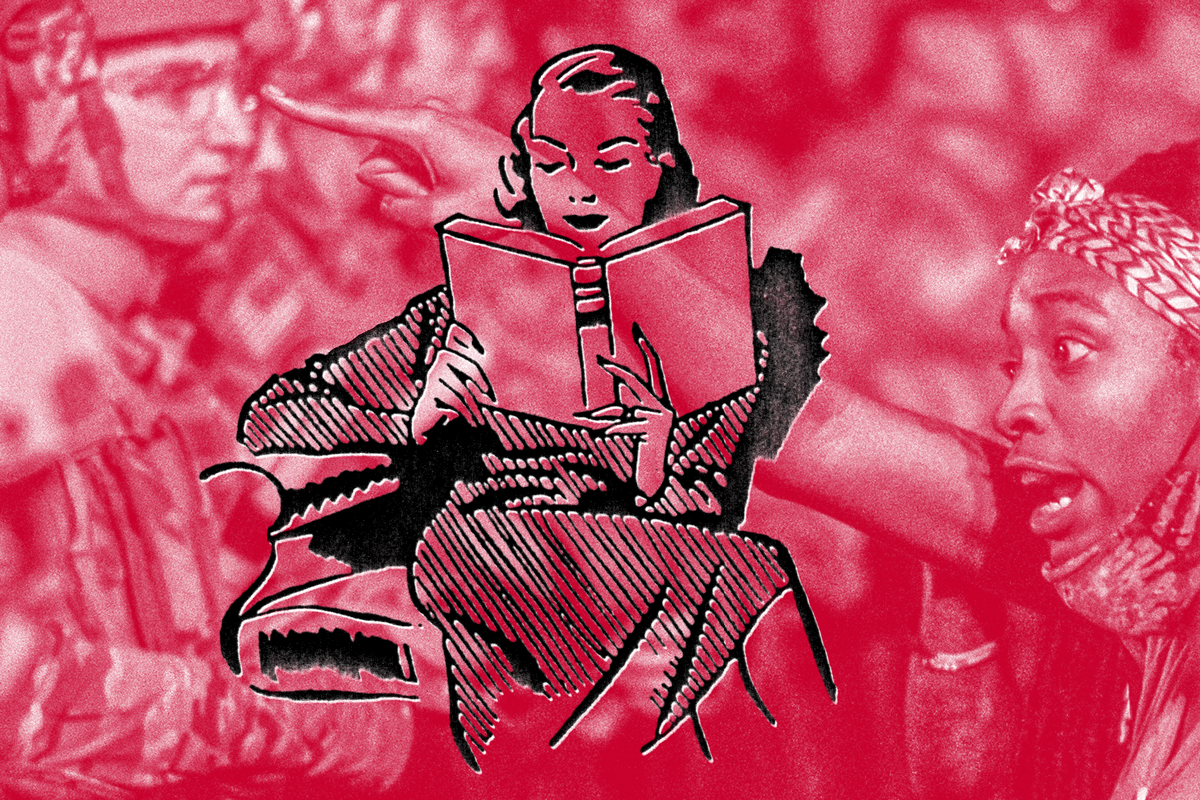To loot an object of its meaning, the object must be seized and its identity erased through an abracadabra flourish of semantics so it can be made anew. Philosopher and psychiatrist Frantz Fanon described this process in his 1952 book Black Skin, White Masks. “I am overdetermined from without. I am the slave not of the ‘idea’ that others have of me but of my own appearance,” Fanon wrote. “And already I am being dissected under white eyes, the only real eyes. I am fixed. Having adjusted their microtomes, they objectively cut away slices of my reality. I am laid bare. I feel, I see in those white faces that it is not a new man who has come in, but a new kind of man, a new genus. Why, it’s a Negro!”
The project of overdetermining Black people extends well beyond the corporal form and bleeds into academia. Under the lenses of “white eyes,” Black studies, hip-hop scholarship, and critical race theory are not what their pioneers defined them to be. These fields of study are seized, undressed and converted into symbols that marshal anxiety among white Americans who no longer know who they are when Black people avow their autonomy. We’ve witnessed this process at close remove in recent months, as much the same rhetoric and legislation that transmogrified enslaved Africans into non-beings have been revived to spin the definition of critical race theory (CRT) off into groundless abstraction—and then denote its effective social meaning to be anything that triggers anxiety in white people.
If this sounds hyperbolic, just consider the testimony of the lead propagandist in today’s CRT moral panic. “Strung together, the phrase ‘critical race theory’ connotes hostile, academic, divisive, race-obsessed, poisonous, elitist, anti-American,” said Manhattan Institute fellow Christopher Rufo. “ ‘Critical race theory’ is the perfect villain.” True to his word, Rufo has been aggressively promoting a wholly imaginary version of CRT while projecting just about every conceivable brand of white anxiety onto it—in exactly the fashion that Fanon long ago diagrammed.
Seizing on this new front in the right-wing culture wars, legislators across 33 states have appointed themselves expert interpreters of critical race theory, further disfiguring its meaning and assailing it as “divisive.” This ritualized exercise in bad-faith demagogy not only means that conservatives are undermining the basic facts of their own identity as Americans benefiting from long-established racial hierarchies; it also serves to hollow out the history of the country into a series of untrue, inoffensive nostrums. Today’s anti-CRT inquisitors thus condemn educators who seek to tell the truth about America’s identity to silence themselves—or else join in the make-believe and bowdlerized version of the country’s racial history—at the cost of their own livelihoods.
To see this process in action, consider an episode that actually predates the full onset of the CRT moral panic. On August 27, 2020 Matthew Hawn, a former teacher in Sullivan Central High School in Sullivan County, Tennessee, talked about “white privilege” with his students during his Contemporary Issues course. During the lesson, Hawn showed a video of the family of Jacob Blake, an African American shot by police officers in Kenosha, Wis., speaking to the press. He also showed a picture of Kyle Rittenhouse with one hand on his rifle and the other hand in the air walking toward police. Rittenhouse, a white American, shot and killed two people in Kenosha during protests of Blake’s shooting. After showing the media to his students, Hawn said, “this is white privilege and it is a fact. Not up for debate, but what are we going to do about racism in the U.S.?”
On September 9, Hawn received an email from Dr. Brent Palmer, Director of High Schools for Sullivan County Schools. Palmer suggested that Hawn was in violation of the Tennessee Teacher Code of Ethics, which says that an educator “shall not unreasonably deny the students access to a varying points of view.” Palmer took issue with Hawn saying white privilege “is a fact.” After receiving Palmer’s email, Hawn did not talk about racism in his classroom until the aftermath of the January 6 insurrection, when a mob of predominantly white Trump supporters stormed the Capitol building as they sought to overturn the results of the 2020 presidential election.
On January 13, Hawn assigned “Donald Trump: The First White President,” an Atlantic article written by Ta-Nehisi Coates, that argues white supremacy is the reason Donald Trump won white voters of every economic class during the 2016 presidential election. Hawn stipulated to his class that the article represents one viewpoint, but four days after he assigned the article a parent complained that Hawn did not offer an opposing viewpoint.
Legislation that defines critical race theory as a “divisive concept” has no standing as a logical or moral argument, and, much like the bid to neuter Holocaust denial, is entirely dishonest.
On February 13, Hawn received a formal letter of reprimand. Hawn revisited the concept of “white privilege” in April 2021. This time, he asked if there was such a thing as “Black privilege,” and included a CNN.com article by John Blake called “It’s Time to Talk about Black Privilege”—a clearly varying viewpoint on notions of privilege. This effort did not alleviate anxiety among school leadership; Hawn received formal dismissal papers on May 5, 2021. “Your job is not to teach one perspective,” Ingrid Deloach, the assistant director of Sullivan County Schools, told him. “Your job is also not to ensure students simply adopt your own personal perspective.”
A “varying” or “opposing” point of view might exist in antagonism of another, but views on race are not neatly contained within traditional political divides. “White privilege” is not cognate with liberal ideology. The Tennessee Teacher Code of Ethics does not position views as “liberal” or “conservative” (indeed, it makes no mention of the words liberal, conservative, Republican and Democrat). The irony is that Tennessee’s own state teaching standards defy the rhetoric Sullivan County Schools used to fire Hawn. The Tennessee State Standards include a strand of guidelines concerning the American “War for Independence;” it mandates that students “contrast how the principles set forth in the Declaration of Independence clashed with treatment of different groups including: women, slaves, and American Indians.” The Tennessee State Standards thus position “white privilege” as a historic fact by acknowledging the Declaration of Independence was meant for white men.
Meanwhile, the Tennessee State Standards for Stratification and Social Inequality go further. An overview of these course instructions plainly states that “students will analyze factors that produce opportunities and advantages for some and disadvantages for others.” Standards listed include:
S.29: Identify common patterns of social inequality (i.e., privilege, poverty, power, race, ethnicity, class, gender),
S.30: Analyze effects of social inequality on groups and individuals (e.g., life chances, social problems, achievement, education, inter- and intra- group conflict among groups and individuals),
S. 31: Explain how social institutions distribute power among groups and individuals and how institutions can produce, reinforce, or challenge inequality.
It is important to note that nowhere in these standards does any language mandate that educators teach whether or not racism and white privilege are real. Instead, the standards simply present racism, sexism, and class inequality as facts in America. For teachers charged with leading classroom discussions of contemporary issues, it is beyond baffling to threaten them with reprimands—and in Hawn’s case, outright dismissal—for citing facts already codified in the state’s standards.
But a good deal more than the professional standing of individual teachers is at stake here. During one of the legal appeals Hawn has mounted to his firing, his lawyer, Virginia McCoy and Ingrid Deloach had the following exchange about the Holocaust:
McCoy: “What if you have a student that comes into class and says, ‘The Holocaust didn’t exist, and that’s my position and I’m not going to change that position’? Is the teacher supposed to not respond to that by saying, ‘Well, actually, the Holocaust did, in fact, happen and it is part of our lesson today’?
Deloach: “That student is entitled to that viewpoint but the teacher needs to present the whole story, whether that be other people who agree with that student or if that be…”
McCoy: “So—so what’s the opposite viewpoint of the Holocaust happened?”
Deloach: “The Holocaust didn’t happen.”
McCoy: “So are you saying that—that a teacher faced with a student who says, ‘I don’t believe the Holocaust happened’ has an—a—an ethical responsibility to treat that as a valid viewpoint and to teach that in the class?”
Deloach: “They have to treat it as a valid viewpoint. They do not have to teach it in the class. Students are entitled to their own views of anything.”
This exchange helps underline a key conceptual point missing in much of the legal and journalistic debate surrounding Hawn’s case. The opposite point of view in studies of the Holocaust is not that it did not happen, but rather that Jewish people are worthy of extermination—and that therefore the murder of millions of Jewish people is not a Holocaust but a justified and necessary ethnic cleansing. (Again, if this sounds hyperbolic, consult the story of Holocaust denialist David Irving’s failed libel suit against historian Deborah Lipstadt and Penguin Books.) In Hawn’s appeal, Deloach would have again benefited looking at Tennessee’s content standards for World War II:
Students will analyze U.S. involvement during World War II as well as the impact of the war at home. 5.21 Analyze the significance of the Holocaust and its impact on the U.S.
Rise of Totalitarianism and World War II (1930s-1945) Overview: Students will analyze the rise of fascism and totalitarianism after World War I, the causes and course of World War II, and the military, economic, and political effects of the war. W.50 Explain the state-sponsored mass murder of the Jews in Nazi-controlled lands, and describe the varied experiences of Holocaust survivors and victims.
Deloach’s stolidly decontextualized and ahistorical efforts to “both sides” an act of genocide is of a piece with the kindred campaign among white Americans to purge their children’s educational experience of any anxiety arising from encounters with the truth of history. Legislation that defines critical race theory as a “divisive concept” has no standing as a logical or moral argument, and, much like the bid to neuter Holocaust denial, is entirely dishonest and, indeed, psychopathic in its implications. Within the repertoire of “opposing views” on the subject of American slavery, for example, is an unmistakable callback to the toxic paternalist myths of the plantation South: namely, the proposition that slavery was good and benefited Black people—which means in turn that the rape of Black women, the forced dispossession of Black families, and the lynching of Black people are plausible and worthwhile subjects of academic defense.
And as with the Old South version of the same refrain, the underlying mission in today’s crusade of historical erasure is to divorce the plight of Black people from anything resembling genuine empathy on the part of white interlocutors. If society is numb to the murder and structural oppression of Black Americans, then society will not be moved to change the laws that govern these evils. The white Americans who denounce critical race theory as an unthinkable source of inner angst and distress thus betray their own rarely acknowledged psychic investment in the justification of systemic violence meted out toward Black people in the service of white supremacy.
This core evasion of Black Americans’ humanity has become so compelling, some white people are willing to destroy their history at the cost of their own humanity.
Indeed, this core evasion of Black Americans’ humanity has become so compelling, some white people are willing to destroy their history at the cost of their own humanity. “I can’t find a way to justify it,’’ conservative commentator Rush Limbaugh said of Derek Chauvin’s murder of George Floyd. In other words, despite the historical foundations of organized police and vigilante violence against Black Americans, and regardless of the video evidence of Floyd’s police murder, the automatic response here was not empathy for a fellow American. It was, rather, a conscious need to explain why a Black man deserved to be tortured and asphyxiated to death under the knee of a white police officer.
During a speech at the Common Sense Society, a right-wing international research institute, Florida’s Republican Governor Ron DeSantis took up the well-worn refrain against CRT: “The goal is to delegitimize the founding of this country, the principles that the founders relied on, our institutions, our constitution, to tear basically at the fabric of our society And they want to replace it with effectively left-wing ideology as the founding ethos of America. That would be a disaster.” Here, too, a leading political figure on the right was telling on himself without seeming to know it: For DeSantis, the truth would be ruinous to the fabric of his identity, which is inextricably bound up with a body of lies about our country’s nature and history.
The actual alleged trespasses against white identity and cultural unity codified in Florida’s anti-CRT bill—SB148, or the “Stop W.O.K.E act”—are more billowing abstractions, in line with the meaningless coinages “divisive concept” and “opposing viewpoint.” Indeed, the substantive meaning of the acronym “W.O.K.E.”—designated simply as “Wrongs to Our Kids and Employees”—is also left undefined. But the privileges of white feelspeak are on flagrant display in the legislation: The Senate bill forbids Florida businesses from mandating employees to attend diversity trainings that trigger any individual to “feel discomfort, guilt, anguish, or any form of psychological distress.”
And once again, state teaching standards tell another story entirely. Florida State Standards instruct teachers to help students “understand the causes, course, and consequences of the Civil War and Reconstruction and its effects on the American people,” and “compare the effects of the Black Codes and the Nadir [of race relations] on freed people, and analyze the sharecropping system and debt peonage as practiced in the United States.”
“How do you teach slavery? The slave trade? The Holocaust?” asked Russell Rywell, a speech and debate teacher who has taught in Miami-Dade County’s public schools for 11 years. “How do you teach these issues without talking about the participants and the roles they played?”
If SB148 becomes law, the effective answer to Rywell’s question will be: don’t. There’s no clear path forward, to take just one instance, for educators to teach the state standard spelled out in section CG.2.10: “Students will explain how governmental action has affected voter participation (e.g., 15th, 19th and 26th Amendments; Jim Crow laws; poll tax; efforts to suppress voters).”
The broader question here, and in all the many other anti-CRT bills and book bans gaining traction on the right, has to do with a deeper quandary of white psychology: Just what is the specific form of distress triggered when white pupils learn that throughout America’s history, racist white citizens actively sought to prevent Black Americans from voting? It might just be the case, as Franz Fanon argues, that this anxiety takes most powerful hold among white conservatives who are themselves slaves to the idea that their identity has no coherence without an explicit ideology that justifies anti-Blackness.
Anthony Conwright is a writer and AAPF fellow living in New York City. Follow him on Twitter @aeconwright.



